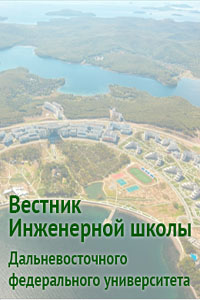Estimated influence of the immersion depth on the hull of underwater vehicles
DOI:
https://doi.org/10.24866/2227-6858/2022-2/27-38Keywords:
underwater vehicle, main body, strength, stresses, stability, immersion depthAbstract
In the world practice of designing and operating underwater vehicles, it is customary to consider destructive for the hull the pressure that corresponds to the loss of stability. The critical pressure at a given maximum of immersion depth depends on the material of the strong hull, its shape and dimensions, the shell thickness and the number of installed frames. In this paper, graphical dependencies and diagrams are constructed with the help of well-known analytical formulas and the SolidWorks Simulation software product. These dependencies and diagrams enable to evaluate the relationship between the strength, geometric and weight characteristics of the main body of the designed underwater vehicle. These characteristics are associated with the estimated depth of its immersion, which allows us to select the parameters of the hull elements at the initial design stages. The calculations of the stress state of the underwater vehicle hull in the SolidWorks program showed that its selected parameters satisfy the conditions of strength and metal consumption during the operation at a given immersion depth.
Downloads
Published
Issue
Section
License
Copyright (c) 2022 Far Eastern Federal Univercity: School of Engineering Bulletin

This work is licensed under a Creative Commons Attribution 4.0 International License.

